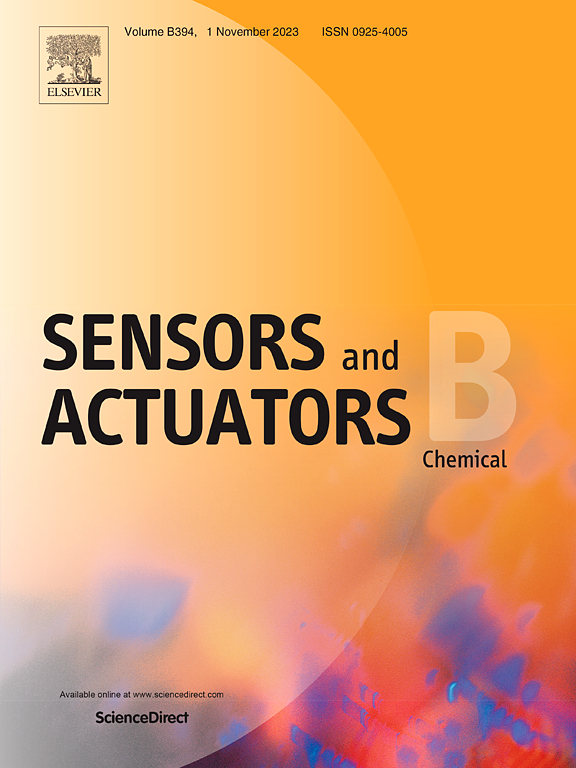Self-templated fabrication of shuttle-like WO3 functionalized with Co3O4 nanobox for efficient detection of acetone
IF 8
1区 化学
Q1 CHEMISTRY, ANALYTICAL
引用次数: 0
Abstract
In this work, a self-template in situ etching strategy was applied to fabricate a hollow shuttle-like WO3-Co3O4 heterojunction. The morphology and nanostructure were investigated comprehensively by a series of techniques. Notably, the hollow shuttle-like WO3-Co3O4 shows a large specific area and promising architecture, which can efficiently promote the gas adsorption-desorption process and provide more active sites in whole composites. Compared to other sensing devices, the WO3-Co3O4 sample with hollow shuttle-like architecture shows the best gas sensing characterizations, and the response to 100 ppm acetone is as high as 52 under optimum working temperature. Moreover, it also presents good repeatability, high against moisture, fast response-recovery speed and long-term stability. The enhanced gas sensing characterizations can be ascribed to the synergistic effect of a unique hollow shuttle-like structure and the p-n heterojunction at the interface of WO3 and Co3O4. These admirable properties make it an excellent candidate for constructing high-performance acetone sensors. In addition, the relative sensing mechanism of shuttle-like WO3-Co3O4 composites-based sensors will be discussed in detail.
求助全文
约1分钟内获得全文
求助全文
来源期刊

Sensors and Actuators B: Chemical
工程技术-电化学
CiteScore
14.60
自引率
11.90%
发文量
1776
审稿时长
3.2 months
期刊介绍:
Sensors & Actuators, B: Chemical is an international journal focused on the research and development of chemical transducers. It covers chemical sensors and biosensors, chemical actuators, and analytical microsystems. The journal is interdisciplinary, aiming to publish original works showcasing substantial advancements beyond the current state of the art in these fields, with practical applicability to solving meaningful analytical problems. Review articles are accepted by invitation from an Editor of the journal.
 求助内容:
求助内容: 应助结果提醒方式:
应助结果提醒方式:


